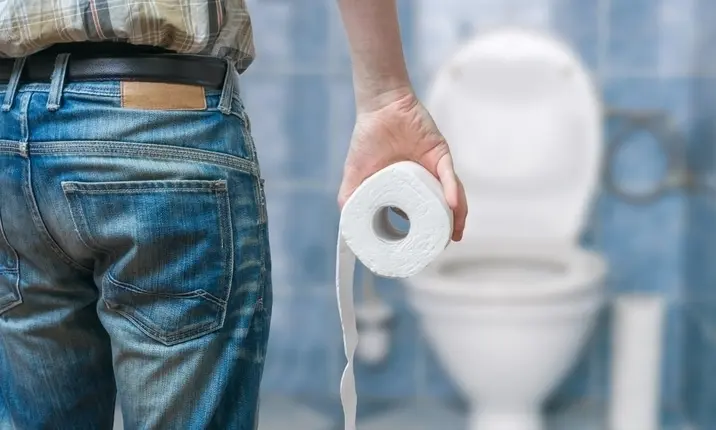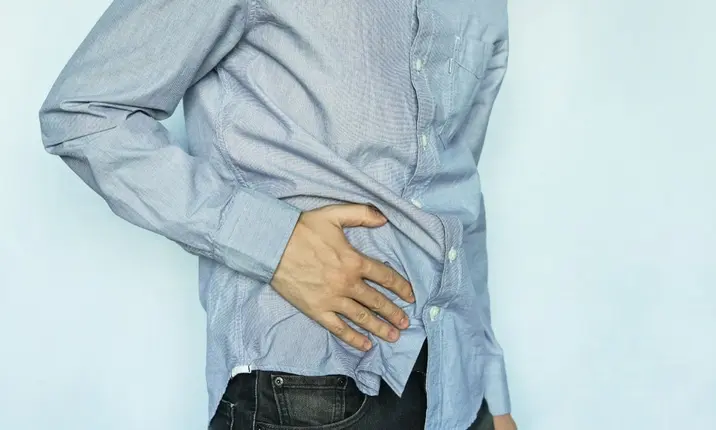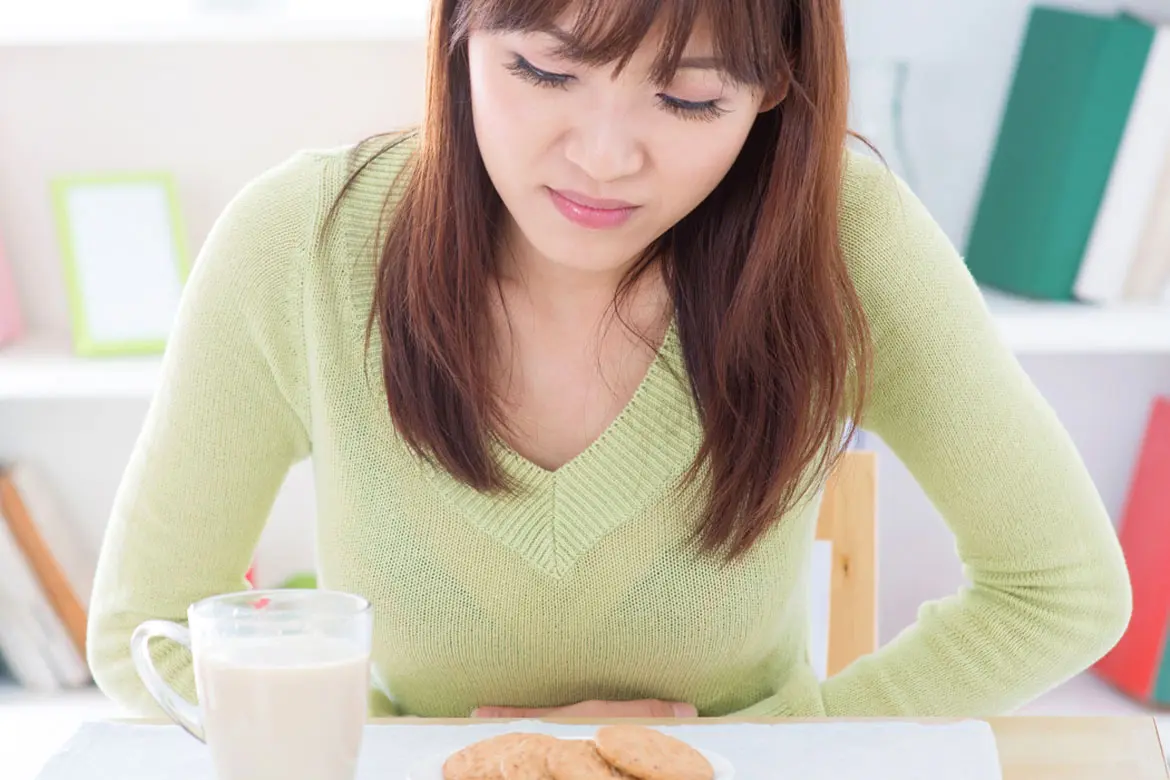-
-
Featured Care Areas


Source: Shutterstock
7 Common Causes of Stomach Pain
Last updated: Thursday, June 28, 2018 | 5 min reading time
Have you ever experienced that sharp, sudden tummy pain in the middle of the night and wondered if it is appendicitis? Or noticed blood in your stool after going to the toilet? Or worried if your lack of appetite is a sign of something more sinister?
Stomach pain can be very disconcerting, and the invention of the internet certainly hasn't helped. In only a few clicks, even the most innocuous Google search will inevitably lead you to the conclusion that death is imminent!
But the truth is, pain or discomfort in your tummy can be down to several factors. And it might not even be your stomach causing the problem. Your torso is home to lots of key organs, like the liver, pancreas, gall bladder and intestines, that are located very close to one another. Your pain could be linked to a problem with one of these.
In the medical community, it is often said that common things occur commonly. If you're experiencing mild pain in your stomach area, it could be down to one of the more common disorders listed below.
1. Gastric pain
Surprise, surprise! One of the most common causes of stomach pain is known as just that – pain. This can vary from a mild, dull ache to a severe, throbbing sensation in the upper stomach area. Most often, it's caused by excessive acid in the stomach.
Other symptoms may include:
- Excessive wind, which can also make you feel bloated
- Indigestion
- Feeling hungry but not being able to eat much before feeling full again
- Nausea or vomiting
Most cases of gastric pain will improve by themselves, or with a simple course of medication. However, if pain or discomfort does not improve, your doctor may arrange for a gastroscopy to exclude the possibility of an ulcer or bacterial infection.
2. Gastroenteritis
If gastric pain is the most common cause of stomach pain, then gastroenteritis is not far behind. Symptoms often include:
- Lower abdominal cramps and pain
- Nausea or vomiting
- Fever or chills
- Watery diarrhoea
- Body aches
Both bacterial and viral infections can cause gastroenteritis. Your doctor will likely recommend rest, fluids and certain medications to help clear it up. Luckily, most cases will go away within just a few days. However, if symptoms persist or you experience bloody diarrhoea, pay your doctor another visit.
3. Constipation
Constipation commonly causes lower stomach pain, because it's basically a build-up of digested food in your large intestine. Mild cases may only cause a bit of pain, but in more severe cases, symptoms may include:
- Nausea and vomiting
- Lower abdominal cramps
- Bloating
- Loss of appetite
- Excessive wind
Constipation is usually easily relieved with a course of laxatives, but if the pain doesn't go away after using the toilet, it is best to consult your doctor.
4. Menstrual cramps
If you're female, it's very common to experience pain in the lower part of your tummy when you're on your period. Everyone experiences this differently, and levels of pain may vary from person to person. Occasionally, menstrual cramps occur alongside:
- Headaches
- Backaches
- Nausea or vomiting
- Low fever
You know your body best, so if the pain is a lot more severe than during previous periods, if it’s worse on the right or left side of your stomach, or if it drags on for a long time, speak to your doctor for more advice. They may need to rule out other ovarian conditions, such as an ectopic pregnancy.
If you're also finding it painful to urinate or there's blood in your urine, bear in mind that it could be a urinary tract infection. This is a very common condition, especially if you are sexually active.
5. Kidney stones
Kidney stones can cause severe lower back and stomach pain. In fact, this is thought to be one of the worst culprits of stomach pain – some people have even compared it to childbirth. Ouch. Symptoms may include:
- Severe pain in the back that travels to the lower abdomen and groin
- Nausea and vomiting
- Pain that comes in waves
- Fever
- Blood in urine
Depending on their size and location, the stones can either be broken into pieces using shockwave therapy or removed during a minor surgery. Occasionally, they will just pass out of your system by themselves.
6. Gallstones
Gallstones tend to block the gall bladder duct, which can cause the following symptoms:
- Pain in the right upper or middle stomach area
- Back pain in between your shoulder blades
- Nausea and vomiting
- Fever and chills
- Yellowing of the skin and whites of the eye
The pain from gall bladder duct blockages often builds up quite rapidly. If the pain is accompanied by a high fever or the yellowing of the skin or eyes, it's important that you seek medical attention immediately.
More rarely, these symptoms are the result of a gall bladder inflammation, which will also require treatment.
7. Appendicitis
So, it's made the list (because you were expecting it!) but contrary to popular belief, appendicitis is not one of the most common causes of stomach pain. Generally, only 1 in 20 people are ever affected, and those are usually between the ages of 10 and 30.
Of course, it's good to be aware of the symptoms, just in case:
- Initial pain in the central stomach area (on and off) before it shifts to the right lower stomach area after a few hours (then remains constant)
- Fever
- Nausea and vomiting
- Pain made worse by pressing the right lower stomach, coughing or walking
If you experience pain in your right lower stomach area that gets worse, you should seek medical advice as early as possible to secure a proper diagnosis. That still stands even if you don’t have any of the other symptoms listed above.
Should you go see a doctor?
There are many, many other possible reasons for stomach pain that aren't listed here. Even if your pain is mild, seeing your doctor can help to put any unfounded fears to rest. Remember:
- If your pain intensifies or worsens despite treatment or medications
- If there is fresh blood in your stools or urine
- If you have a high fever
- If you experience severe, debilitating pain
- If your symptoms are not improving with treatment
Always seek medical advice.
Early treatment often means a better prognosis, and visiting your doctor will help you to catch any disease early and start treatment as soon as possible.












